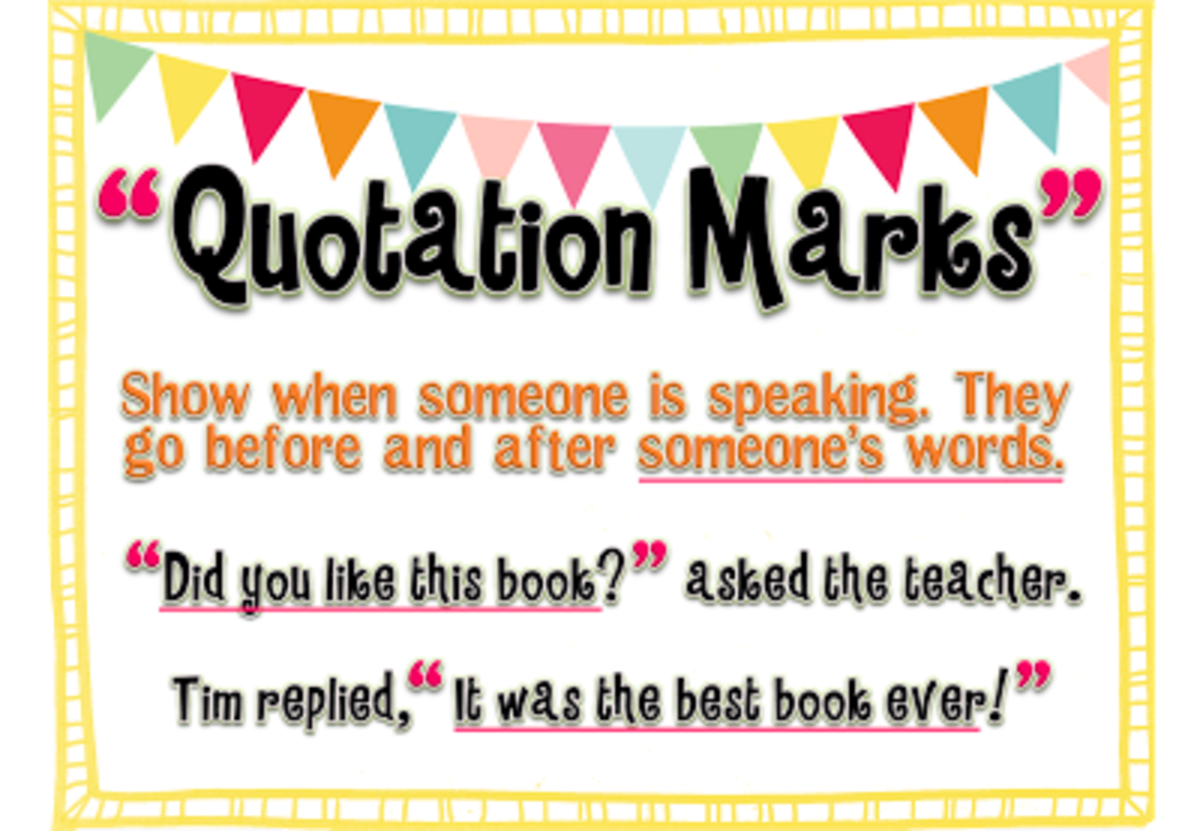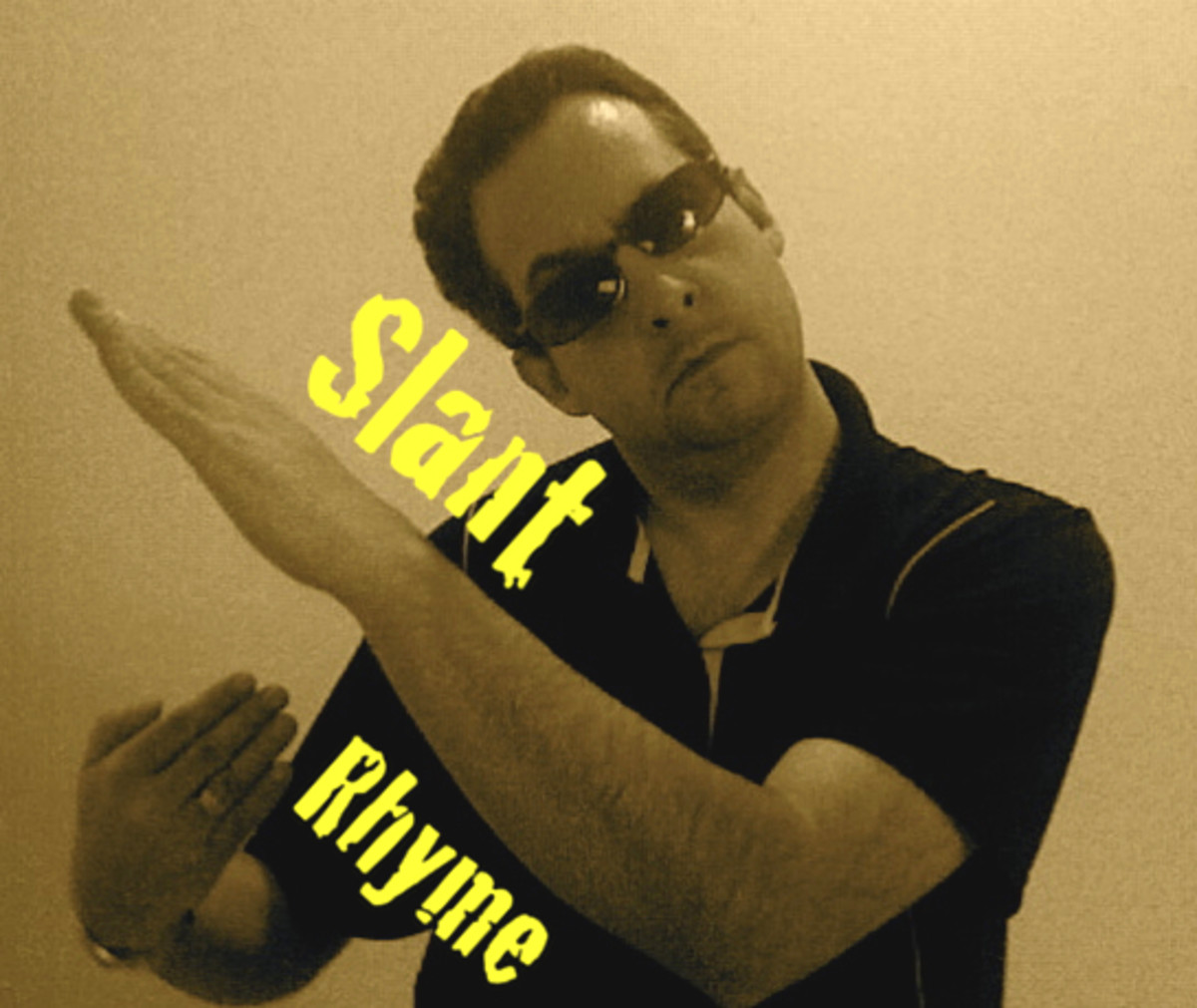Tips for Writing Good Dialogue
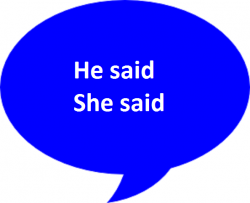
Writing Effective Dialogue is Much More Than Proper Punctuation
Yes, proper punctuation is an essential part of writing good dialogue, but it's only one piece of the pie. Properly punctuated dialogue can still be confusing, full of redundancy and even boring for the reader. In fact, writing engaging dialogue is often the most difficult part of creative writing to master.
Here, I'll share as much of what I've learned about writing effective dialogue as I can think of. If I've left anything out -- if you have a question I haven't addressed or not addressed clearly enough -- please leave your question or your own tip for writing good, engaging dialogue in the guestbook below, and I'll be sure to answer.
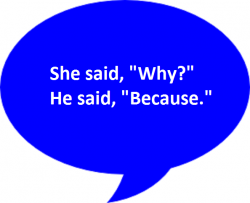
First, We'll Look at How to Punctuate Dialogue
Beginning and end punctuation, internal quotations and more...
As you're probably well aware, dialogue is indicated by the use of quotation marks at the beginning and end of a character's spoken words. But there's a bit more to it than that. Here are some additional punctuation tips to keep in mind:
End punctuation for dialogue goes INSIDE the quotation marks.
For example....
- Mary said with a sigh, "I'm sorry I let you down." (Period inside end-quotes)
- "I'm sorry I let you down," Mary said with a sigh. (Comma inside end-quotes)
- "What can I do for you?" Jim asked the caller. (Question mark inside end-quotes)
- Beth stuck her head in the door and shouted, "Hello! I'm here!" (Exclamation point inside end-quotes)
The exception to the above rule occurs -- and this can be confusing -- when a question is asked by a narrator or character and that question includes another character's quoted dialogue. In that case, the question mark goes outside of the quoted dialogue, because the question 'belongs to' the narrator or current speaker.
Here I'll show you two examples....
- If she didn't mean it, why did she say, "I love you"? I asked myself this question many times.
- "What did you mean by, 'I'm guilty, so sue me'?" Jim asked his sister.
In the first example, the question is asked by a first-person narrator, so it's not considered dialogue and, therefore, is not enclosed in quotation marks. The quoted dialogue is enclosed in quotation marks, but the question mark is outside the end-quotes, because the narrator is asking the question ... not the character who said, "I love you." Make sense?
In the second example above, the quoted dialogue is enclosed in single quotes since it's inside another character's dialogue. The question mark is outside the second single quote because it's not part of the quote. The question mark is inside the last double quotation mark because it's part of the speaker's question.
I know, clear as mud, right?
But that brings up a general rule: Quoted material inside dialogue is indicated with single quotation marks within the double quotation marks.
Okay, moving on ....
When dialogue is not at the beginning of a sentence, a comma is used before that dialogue begins. A comma is also used inside the end quotes when the sentence continues beyond the end of the dialogue. Both of those comma uses can be seen in this example...
- Bobby whined, "That's so not fair," and stamped his foot.
Not necessarily the most literary way to write that bit, but I wanted to illustrate my point. There's a comma after "whined" and before the dialogue. Then there's a comma after "fair" and before the end quotes, because the sentence continues.
Okay, so writing about punctuation isn't exactly my forte. So I'll refer you to someone else (see below) and move on to the fun stuff: style tips.
A Handy Punctuation Guide For Creative Writers - Keep this book full of punctuation rules close at hand....
The author of this guide does a MUCH better job of explaining punctuation than I ever could.

Dialogue Style Tips and Tricks
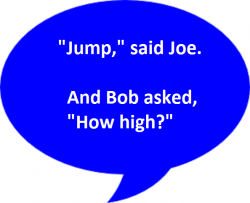
Be Clear About Which Character is Speaking
Okay, I'd much rather write about style than punctuation. So here goes....
When writing dialogue, especially an extended conversation, it's important to be clear about which character is speaking. As the writer, you know who is saying what, but your readers will need more information.
As a rule, each time the dialogue switches to a different character, begin a new paragraph. This will be a visual signal to the reader that someone else is speaking. Of course, if one is listening to the story, the paragraph change is unknown, so other indications are necessary.
A writer's first tendency is often to follow up dialogue with "so-n-so said." And that's fine! However, one pitfall that often catches new writers is the tendency to overuse "he said" and "she said" after every bit of dialogue. Overuse -- even just twice in a row -- can sound awkward and amateurish.
Simple case in point:
- "It's so nice to finally meet you," Mary said.
"I've heard a lot of good things about you, too," said Bob.
Yuck. Even if the dialogue were much more interesting ... still yuck.
It's unnecessary -- and redundant -- to continually use "said," "replied," "answered," "asked" and any number of other verbs along with a character's name or a pronoun to indicate who is speaking. Yes, you can consult the thesaurus and use verbs such as "announced," "explained," "whined," "sobbed," "exclaimed," "moaned," and so forth to break up the "saids" and "replies," but there are other techniques you can use when writing dialogue to keep it flowing smoothly, keep the reader engaged, and avoid confusion about who is speaking.
For example, use a short introductory sentence before a character speaks to describe an action, which not only indicates who will be speaking but also paints a picture for the reader at the same time. And visuals are a good thing. This picture may convey a character's emotion ("Mary nervously scratched behind her ear.") and/or give a glimpse of the character's physical appearance ("Bobby twirled the end of his graying mustache as he paced.") and/or the setting ("Beth straightened the framed photos along the wall as she rambled on."). Then you can continue with the dialogue in the next sentence, and the reader will already know who's speaking.
This technique serves another purpose: it's a great way to work in details about a character's physical appearance or personality or the setting, rather than lumping all of such detail into long descriptive paragraphs. In other words, you can weave those types of details in with the dialogue, gradually fleshing out your characters and the setting without hitting your readers over the head with it all at once.
Now back to writing dialogue....
Occasionally, the character who is speaking may use another character's name, such as the person they are speaking to, which will indicate which character is actually doing the talking. But think about how often you say the name of the person you are speaking to. Probably not very often, so don't overdo it in your writing either. An example of when this would be appropriate is if a character is trying to get another character's attention or perhaps if a parent is scolding a child. ("Debra Elaine, how many times have I told you to throw your laundry in the hamper instead of on the floor?")
And, of course, there are times when you can simply write the next part of the dialogue without a "said" (etc.) or any introductory sentence at all, and it will still be clear who's speaking.
Here is an example from my novel, I. Joseph Kellerman, to illustrate what I mean. At this point in the story, it's been well established who begins this conversation....
- "Hello, Mr. Babbish."
- "Miss Fairhart, Ma'am. Wow, you--you're looking lovely."
- "Why, thank you."
- Bernie was looking apologetic, his head bowed and shoulders pulled in as if to make himself even smaller. "Is that a new dress?" he asked, sitting. "It's awful pretty."
- "Well, thank you again. But, no, I've had this for years, actually." Bernie looked disappointed, so Constance added, "Although, I don't think I've worn it on a Tuesday in a very long time."
- "Oh, yeah, okay. I remember now. Yeah, but I was just sayin', you know, that it's
- nice
- , that's all."
Note how parts of the dialogue stand alone, without a "he said" or "she said" or any lead-in text at all.
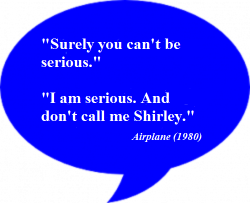
More Tips for Writing Effective Dialogue
Lengthy dialogue can become tedious and bore the reader unless it's broken up with some action or descriptive prose.
Dialogue should move the story forward. Avoid empty dialogue that doesn't really serve a purpose.
The purpose of dialogue may be to advance the plot. It may give insight into a character's feelings, motivations, relationships with other characters, personality traits, and so forth. There are many things dialogue can contribute to a story, but be aware of including "chit-chat" that has no real meaning in the context of the story or that is redundant, showing or telling what's already been clearly conveyed. This is something to look for during the editing process rather than getting too hung up on it when writing your first draft.
Avoid overuse of "colorful" language. Yes, real people swear and some swear a lot. By the same token, it's fine to include a four-letter word now and then in your writing. A rare but well-placed profanity can say plenty about a character's mood or personality without having to include a swear word every time the person speaks. You run the risk of turning off your readers -- even those who swear quite often themselves -- if you overdo it.
Also, avoid overuse of "ly" adverbs. This applies to the entire text, not just to dialogue. But dialogue is one area where some writers tend to overdo it with "ly"s, such as "he said jokingly" ... or "nervously," "coyly," "quickly," "slowly," "softly," and so forth. "Ly" adverbs certainly have their place, especially (<--there's one)
if you really want to convey how something is said, feel that information is important to the scene, and don't have another way -- through a character's actions, for example -- to show rather than tell the manner in which something is said. Be aware, though, that too many "ly" adverbs can stick out like a sore thumb and really bog down the dialogue. You want your reader to be engaged in what's said, not distracted by adverbs.
Be aware of point-of-view (POV) when writing dialogue. What I'm referring to here is any text outside the dialogue that you might use to describe a character's emotion or unspoken thoughts. Even writers who are well versed in POV can inadvertently (<--another "ly" adverb) insert a glimpse into a character's unspoken thoughts or state something that only that character would know, switching POV without intending to.
For example, if you intend to tell the story -- or that portion of the story -- from character Joe's POV but write, "Brian didn't believe a word of what Joe was saying," in order to introduce Brian's next bit of dialogue, you've entered Brian's brain and are therefore writing from his POV in that sentence. If you don't mean to do that, you'll need to convey Brian's thought via his words in the dialogue or through his expression or action--something that can be seen and interpreted if it's not otherwise spoken. Just something to be aware of.
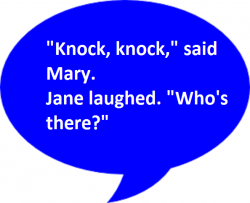
Vary Sentence Structure When Writing Dialogue
Just as you would in the rest of the text....
Varying sentence structure and the placement of the "he saids" and "she replies" (and whatever other creative verbs) will make the dialogue flow more naturally.
Here's an example of an exchange between two characters that employs this technique and other tips I've just covered. This is a short excerpt from my novel, A Picket Fence in Pawpaw.
- Jeremy nudged me in the ribs as we leaned against our town's only police car for Chief, our only policeman. It was a royal blue and very rusted Buick Skylark hardly capable of a one-way cruise to the junkyard.
- "So whaddya figure's gonna happen to the ghosts when they knock it down?" My naïve cousin was referring to the former Sagebrush Personal Care Home.
- "There's no ghosts, silly."
- "Hey, you're the one who told me about 'em. You said the old folks who died there, their spirits float around and haunt the place."
- I never did believe that nonsense, at least not the way I'd explained it to Jeremy, but he was too gullible for my big mouth to resist.
- "Well, I forgot to tell you, they left a long time ago. Moved into Maxine's after the fire."
- A white ring appeared around magnified green irises.
- "No way."
- "Yup."
- Then Jeremy's eyes became big slits. "How do you know?" he had the gall to ask.
- "Seen 'em."
- "When? I been there all the times you have, an I never seen any ghosts."
- Jeremy had recently begun questioning me. I found it rather annoying.
- "Look, stupid, you don't always go everywhere I go. I been to Maxine's plenty of times without you, an I seen ghosts with my own eyes. They hang out in the shadows and peek around corners to look atcha. And you can hear them sometimes." I performed my finest imitation, with a high-pitched "w-o-o-o" and a deep "wah-ha-haaa." I said, "They live on the third floor and come down any time they want. Maxine told me so."
- I'd never gone to Maxine's without Jeremy. And neither of us had been to the top floor of her building.
- Jeremy frowned and averted his eyes. "Well, she can have 'em. Anyways, I'll be glad when Sagebrush is gone. Gives me the creeps, and it don't look good."
And that about does it for now. If I think of more dialogue-writing advice, I'll be back to babble at you.
Tips for Writing Effective Dialogue from Other Authors
"There should a flow to the dialogue. It's similar to music that way. Make sure that different characters speak with different cadences. Also, some characters will have favorite words or expressions. You don't want to go overboard with this, but a little is a good thing. Conversely, make sure that multiple characters don't use the same expression. I was catching this in early drafts of my story 'Trial of Tears', and what I did was extract each major character's dialogue out into separate word docs, so I could see how they would stand on their own."
From Chris Semal, author of Trial of Tears
Read More About Writing Effective Dialogue
Available in paperback and on Kindle....

My Novels
This was my first published novel, now available in paperback and on Kindle from Amazon. Or you can order signed copied directly from me on my website, HikingWriter.com....
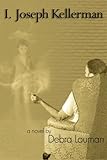
This is my second novel, currently available on Kindle....
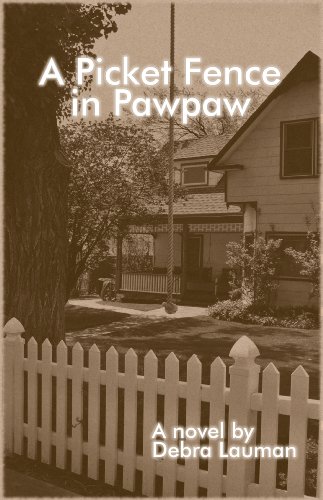
And if you have any questions about writing dialogue....
....or want to know more about something I mentioned, let me know in the comments area below, and I'll reply there.
Also, please add any additional dialogue-writing tips I missed. After all, there's no one right way to write!

